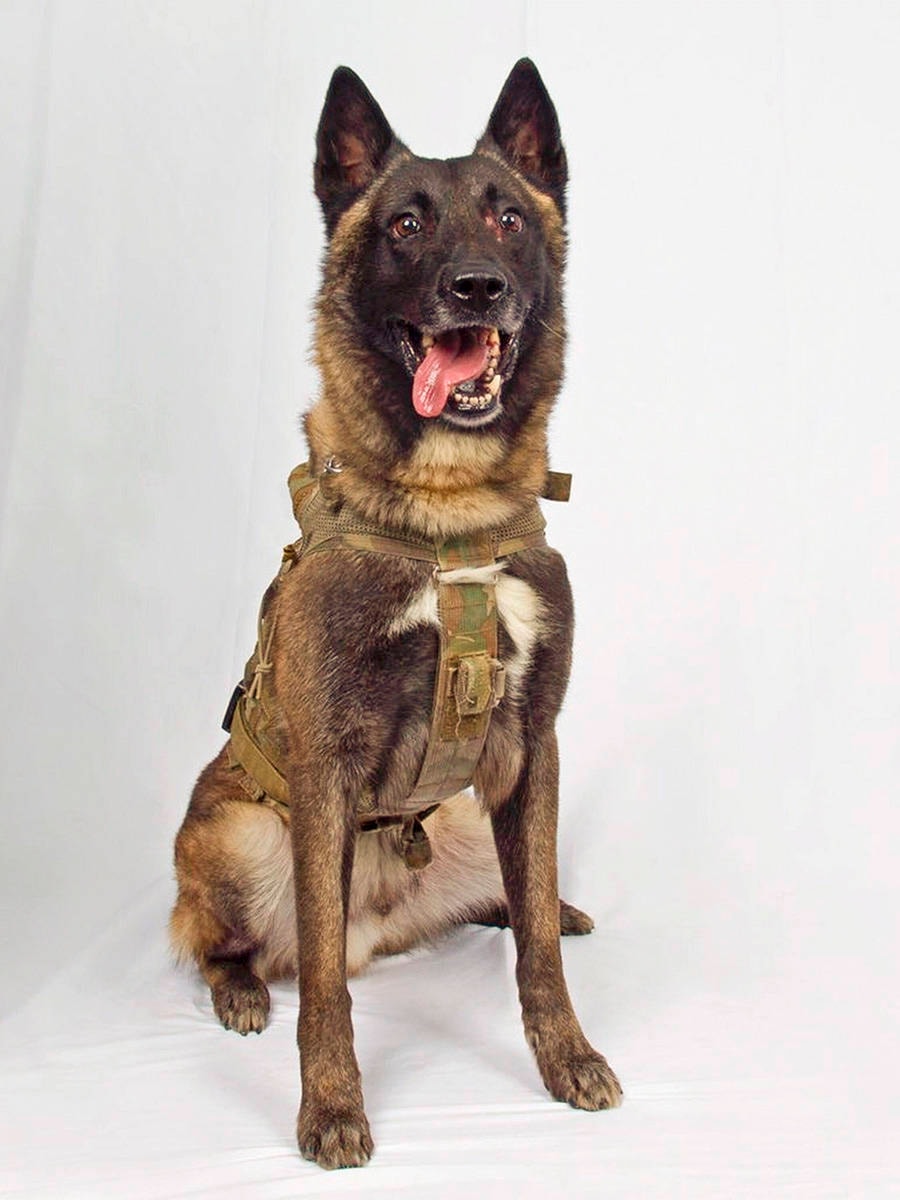The only publicly acknowledged hero of the U.S. military operation that took down Abu Bakr al-Baghdadi has become an internet sensation after suffering injuries in the underground blast that killed the shadowy Islamic State leader.
It’s a military dog, just one of many used by U.S. forces for patrols, guard duty, intimidation and sniffing out threats.
U.S. President Donald Trump tweeted out a picture of a dog receiving a medal captioned “AMERICAN HERO!” and later referenced that the actual dog in the raid, named Conan, will be leaving the Middle East next week and heading to the White House.
AMERICAN HERO! pic.twitter.com/XCCa2sGfsZ
— Donald J. Trump (@realDonaldTrump) October 30, 2019
Canada’s special forces, too, have been quietly building up their canine units in recent years. They just they don’t like to talk about it.
Canada, like many countries, has a long history of using dogs, horses and even carrier pigeons in war. That includes the use of sniffer dogs in Afghanistan to find improvised explosive devices, which were responsible for the majority of Canadian deaths during the decade-long mission.
As integral as those dogs were considered to the Canadian war effort in Afghanistan, they were owned and handled by contractors hired by the military specifically for the task — contracts that expired when the mission ended.
The military’s experience with dogs wasn’t over, however, said Capt. Jamie Donovan of Canadian Special Forces Command.
“Canadian special forces gleaned much from allies in Afghanistan in the employment of canines in support of special-operations forces, and were themselves using canines on operations by the end of that mission,” Donovan said in an email this week.
“Following Afghanistan and since 2012, we’ve aimed to further develop and sustain a canine capability within the command.”
Donovan wouldn’t reveal much, but did say the dogs are divided into two groups: one to sniff out threats such as bombs and one to conduct patrols with special forces soldiers and track and apprehend enemy fighters.
Some clues can also be found in a public notice in which the Department of National Defence revealed it was looking to buy a number of dogs.
“DND has a requirement for canines that demonstrate the characteristics and capabilities to successfully complete a demanding training program followed by working in a challenging operational environment,” reads the notice, published in December 2018.
In particular, the Forces were in search of untrained Belgian malinois, German shepherds and Dutch shepherds between the ages of 10 months and three years.
At the same time, the selected dogs needed to show a “sound temperament and a bold and confident attitude with no signs of either shyness or over-aggression,” the ability to work with people and learn, a strong drive to hunt and retrieve and an “implicit ability” to fight if required.
They were also forbidden from showing any fear of water, any propensity to bite their handler during stressful moments, and needed to “show no fear and not be distracted by unsure footing, tight and/or dark enclosed spaces, moving vehicles and loud noises including gunfire.”
KEEP READING: Trump says Islamic State leader dead after U.S. raid in Syria
Lest any dog lovers out there worry the Canadian military has been secretly sending dogs into battle without the proper equipment, public records show the government has bought tens of thousands of dollars worth of protective vests for its canine units over the past few years.
Lee Berthiaume, The Canadian Press
